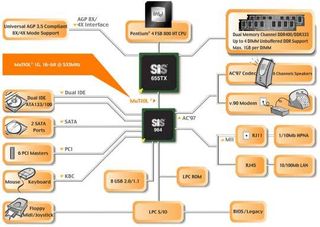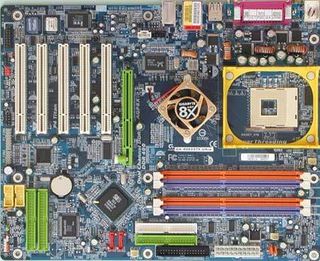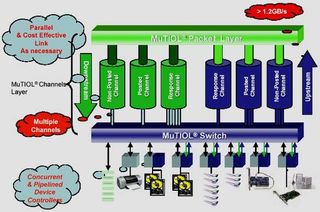The SiS, VIA and Intel Showdown at the Performance Chipset Corral
SiS 655TX


Please click on the image to enlarge.
The name 'TX' should ring a bell, since a chipset with the same suffix came out in the late 90s: the Intel 430TX, aka Triton 4, the successor to the 430FX, HX and VX models. The latter was the first model to support SDRAM - back then still with 66 MHz. The TX marked the first time Intel was able to offer convincing SDRAM support. It remains to be seen whether the 655TX from SiS proves as convincing.
Our initial tests showed that Gigabyte has done a good job. However, Gigabyte deployed a performance-enhancing method that we aren't too pleased with: the system speed ran somewhat above the specification. When manually set at 200 MHz, the system ran at a system speed of 201.7 MHz and a CPU rate of 3,228 MHz. 199 MHz wasn't an option, either, as the CPU only clocked 3,182 MHz. So we very reluctantly switched to 3,228 MHz, since the competition is likewise just above specification.
The special thing about SiS is its HyperStreaming architecture. SiS provides a Flash demo with a clear explanation of the function behind the term. It's relatively easy to grasp, too, because HyperStreaming is an intelligent layer that is a component of both the Northbridge and Southbridge architectures that handles all data transfer. The goal of the whole thing is to use available resources more efficiently and to widen bottlenecks like those that can occur between the Northbridge and Southbridge.
To do that, the connection between the two chips, which SiS calls MuTIOL, can be split into channels as needed. These in turn can be flexibly allocated and prioritized.


Stay on the Cutting Edge
Join the experts who read Tom's Hardware for the inside track on enthusiast PC tech news — and have for over 25 years. We'll send breaking news and in-depth reviews of CPUs, GPUs, AI, maker hardware and more straight to your inbox.
Most Popular

